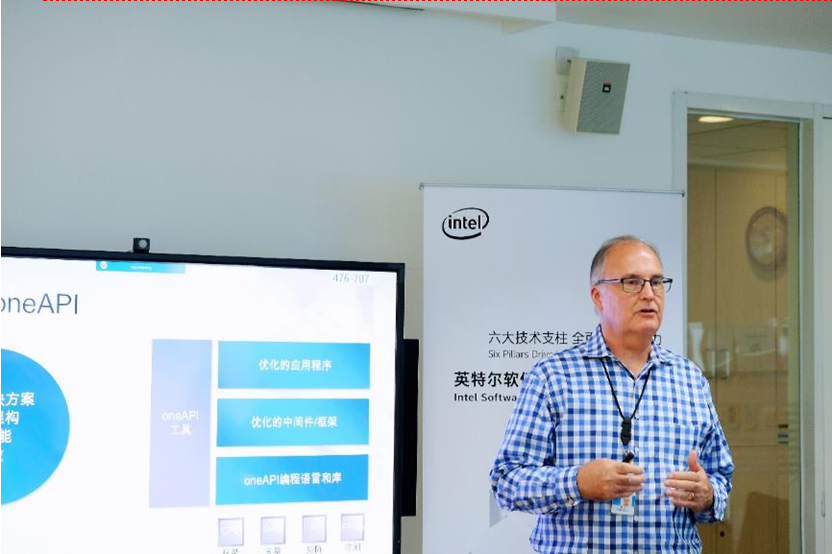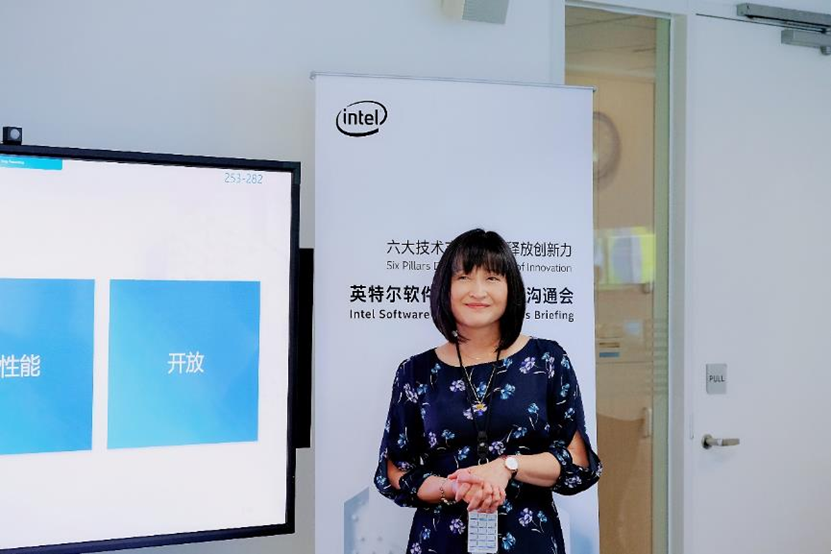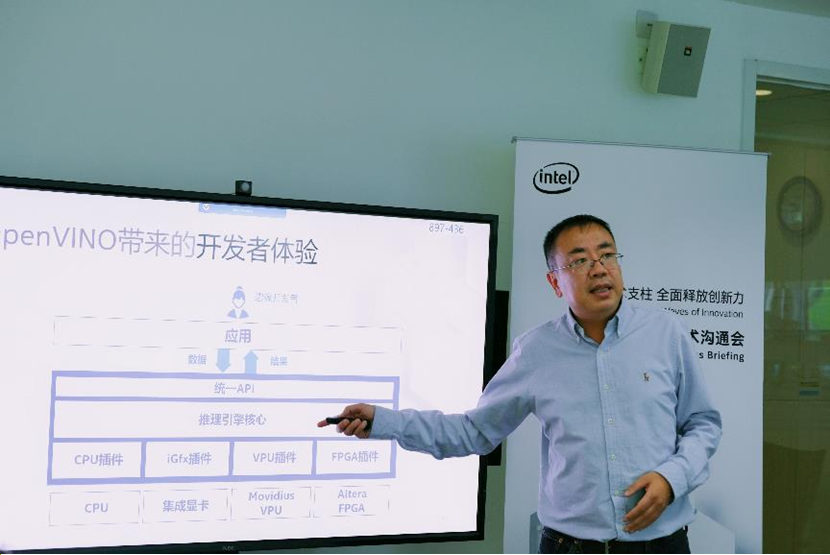In response to the ever-expanding diversified computing needs, Intel has introduced a new product and technology strategy rooted in six technology pillars - process and package, architecture, memory and storage, interconnect, security, and software. Intel will drive exponential improvements in computing performance through omni-directional computing innovation across these six technologies.
For the technology pillar of software, Intel believes that software can deliver two orders of magnitude performance gains for every order of performance gains in the new hardware architecture. For developers, having a common software tool across platforms is critical to achieving exponential expansion of performance. To this end, Intel launched the "oneAPI" project at the end of last year to simplify the programming development of various computing engines across CPUs, GPUs, FPGAs, artificial intelligence and other accelerators, and will release a developer test version in the fourth quarter of this year.
A few days ago, Intel Software Strategy and Technology Communication Conference was held in Beijing. Intel comprehensively introduced the technology strategy of the era of diversified computing, and deeply interpreted the industrial significance and strategic layout of software.
What is Intel OneAPI?

Bill Savage, vice president of Intel Architecture, Graphics and Software, introduces oneAPI
According to William (Bill) Savage, vice president and general manager of computing and developer products at Intel's architecture, graphics and software division, oneAPI starts with a hardware architecture. In the data center, today's architecture is not limited to CPUs, but also includes GPUs. FPGAs and dedicated AI chips, which correspond to different computing architectures for Scalar, Vector, Matrix, and Spatial, are called SVMS architectures.
To put it simply, Intel's oneAPI is a unified software architecture that spans different architectures and across different vendors, including hardware vendors other than Intel. oneAPI simplifies and unifies the different hardware architectures of scalar, vector, matrix and space from the software level.
Intel OneAPI consists of two parts. The first part is a cross-architecture programming language. It is a new programming language, which can be used by many different architectures and vendors. The second part is a collection of cross-architecture libraries that can meet the needs of different fields. Whether it's this new programming language or the architecture library, the focus is on performance, because providing comprehensive performance in the data center is a top priority.
William (Bill) Savage said: "OneAPI is both a specification and a product of Intel. It simplifies and unifies programming across different architectures and vendors. It is a kind of encouragement for community and industry support. An open, standard solution that offers an alternative to NVIDIA CUDA."
Cross-architecture programming language - Data Parallel C++

Alice Chan, vice president of Intel Architecture, Graphics and Software, and general manager of the compiler and language department, introduces DPC++
Today, there are a large number of diverse hardware architectures in the data center. If you want to program in such a diverse and diverse architecture, you will need a lot of different tools and different languages. This means that you need multiple teams in the software development process, each of whom has to learn a lot of different professional skills, which is obviously not the most efficient way to develop software. So Intel hopes to change this situation, not only for Intel's own hardware to change, but for the entire industry to change.
Alice Chan, vice president of Intel Architecture, Graphics and Software, and general manager of the compiler and language department, said: "The purpose of our new programming language is to achieve cross-architecture, high performance, and open, for all software development. Open, open to all hardware vendors."
Diversified architecture requires a new programming language. Existing portable programming languages such as C++ and MATLAB, and data parallel programming languages such as CUDA and OpenCL cannot meet the requirements. Intel is working with the industry to develop a new language that enables data parallel programming across the SVMS architecture.
The DPC++ language provides Intel and the industry with uncompromising performance and productivity across the SVMS architecture. It is a new language that Intel is currently developing. It is open, standards-based, high-performance, and can span different The hardware architecture provides high performance.
High-performance libraries drive the development of artificial intelligence and data analysis

Eric Lin, Principal Engineer, Intel Architecture, Graphics and Software, introduces the benefits of unified APIs
Intel's vision for AI and data analysis is to provide the best computing libraries, and for these computing libraries, turn Intel's hardware into a very easy abstraction for developers, making all their work reusable and streamlined. Intel also provides tools and methods to enable deployers to truly benefit from oneAPI.
According to Eric Lin, Principal Engineer, Intel Architecture, Graphics and Software, oneAPI integrates the industry's top computing libraries, including the fastest and most widely used math library MKL, the Intel Data Analytics Acceleration Library DAAL using classic machine learning algorithms, and The Intel Mathematical Core Function Library MKL-DNN for deep neural networks, etc., fully understands all the details of the underlying hardware such as CPU and accelerator, and provides the best performance for the hardware.
OneAPI provides data scientists and application developers with a unified software abstraction across the SVMS architecture, giving all developers high-performance at any time.
Intel's strategy is to integrate the library into the framework, which is then provided to millions of data scientists and algorithm engineers who use it to develop real applications. For example, a library service tens of thousands of framework developers, serving millions of data scientists, so the road from hardware to application.
Eric Lin said: "OpenVINO demonstrates the reality of oneAPI's vision. As an optimized reasoning engine for customer problem solving, OpenVINO complements the deep learning framework to enable application developers to develop across a SVMS architecture with a unified interface."
It is reported that oneAPI has started cooperation with many manufacturers. In Baidu, Baidu relies heavily on Intel Xeon processors for deep learning in Paddle Paddle's deep learning training and reasoning workload. On Facebook, most of AI's AI business uses Intel-optimized PyTorch to support their daily business. This will help Facebook accelerate its 200 trillion predictions and 6 billion translations per day; Taboola also uses Intel Xeon oneAPI, which has been optimized to achieve a 2.5x improvement.
Summary: Intel oneAPI supports direct programming and API programming, and will provide a unified language and library that provides full native code performance on different hardware including CPU, GPU, FPGA and AI accelerator. The investment in oneAPI and advanced algorithm research and development has had a profound impact on Intel's goal of "making every transistor come in handy." Intel plans to release the oneAPI developer test version in the fourth quarter of 2019 and disclose more details about the project, so stay tuned.


